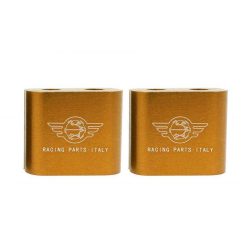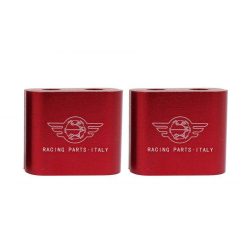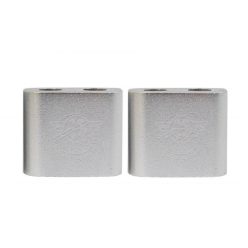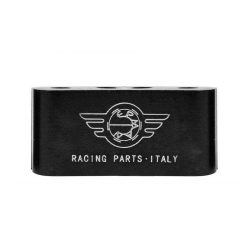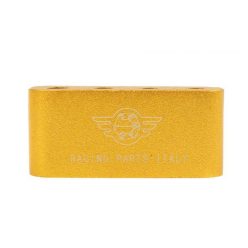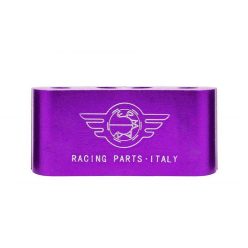Our Ignition Cable Separators & Guards keep plug leads neatly routed and protected. Available in multiple layouts (e.g., 2×2, 4-way) and colours, they prevent chafing, minimise cross-talk and tidy the bay. Choose by lead outer diameter, engine configuration and mounting position to ensure a secure, long-lasting install.
Brief Summary & Key Benefits
Ignition Cable Separators & Guards keep high-tension leads at a fixed spacing, reducing chafing, heat contact and electrical cross-talk. A tidy layout eases troubleshooting, improves reliability and creates a cleaner engine-bay appearance for road and motorsport use.
Technical Basics
Separators provide both mechanical and partial electromagnetic isolation. Even with resistance or spiral-core leads, tightly bundled runs can induce crossfire, particularly between sequential cylinders. By enforcing a consistent gap—especially between critical cylinder pairs—separators help minimise unwanted coupling.
Common materials include heat-resistant polymers (PA/PP) and anodised aluminium. Polymers are light and damp vibration; aluminium offers higher stiffness and crisp looks. Layouts range from 2-, 3-, and 4-way to 2×2 sets for V-engines. Match the groove size (typically for 7–9 mm OD leads) so cables sit secure without compression. Mounting options include clip-on frames, screw-on brackets and tie-wrap channels.
Typical pitfalls: undersized grooves that nick the insulation; sharp edges that abrade; placement that draws leads towards heat sources (manifolds, turbo); over-tightened ties deforming the sheath.
Selection Criteria
Lead diameter: measure OD and choose a groove ~0.5–1 mm larger for a snug, non-cutting fit.
Engine layout: inline engines often suit 4-way blocks; V-engines benefit from 2×2 or per-bank pieces. Follow OEM routing where possible.
Material & heat: near hot zones pick higher temperature capability or aluminium, and consider additional sleeving. Prefer rounded edges to protect the jacket.
Colour/ID: colour-coding or embossed labels helps cylinder identification and speeds diagnostics.
Mounting: check for factory holes or studs; otherwise use tie-wraps to nearby looms or tubes while allowing for engine movement.
Installation & Maintenance
Plan the lead path from coils to plugs with gentle bends and slack for engine motion. Position separators on longer straight runs and align with firing-order pairs. Tighten hardware lightly and avoid pinching the insulation. For suction or bracket mounts, use washers and modest torque.
Inspect periodically for chafe marks, hardening or loosened mounts. Rinse during bay cleaning; if heat discolouration or ageing appears, replace and review heat shielding.
FAQ
Q: Do separators reduce misfire from cross-talk?
A: Yes—by keeping leads apart, they lower capacitive coupling, especially at high secondary voltage.
Q: What size should I buy?
A: Most leads are 7–9 mm OD; select a matching groove so cables are held but not compressed.
Q: Where should I place them?
A: On straight runs, clear of heat sources, leaving slack for engine movement and service access.
Q: Will plastics harden?
A: Quality heat-resistant polymers last well; for extreme heat, choose aluminium and add sleeves.
Q: Can I paint or polish them?
A: Yes, but keep the groove smooth to avoid damaging the cable jacket.


